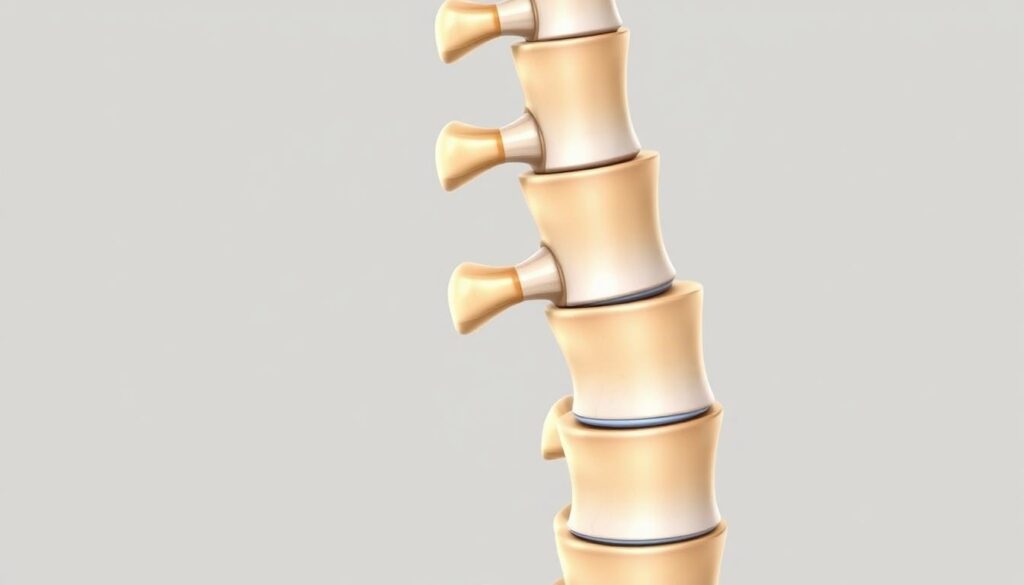
Facet joint injections are a common treatment for managing spinal pain. This pain is often caused by arthritis and spondylosis. These injections can have various side effects based on where they are given and the patient’s health. Key side effects of cervical cervical facet injections side effects and how to manage them effectively.
At Liv Hospital, we focus on patient care and being open. This helps you make better choices about your treatment. Knowing the possible problems with facet joint injections is key to your care.
When we look at facet joint injections, it’s important to think about the lumbar facet injection side effects. These effects can affect your overall health.

To understand facet joint injections, we need to know about facet joints and their role in the spine.
Facet joints are small joints between and behind vertebrae in the spine. They help us twist, bend, and extend our backs.
Facet joint injections help diagnose or treat spinal pain. They inject medication into or around the joints. This can tell if the joints are causing pain or help relieve it.
These injections can be given in different parts of the spine. This includes the neck, mid-back, and lower back. The location depends on the patient’s pain and condition.
| Spinal Region | Common Conditions Treated |
| Cervical | Neck pain, whiplash |
| Thoracic | Mid-back pain, rib stress fractures |
| Lumbar | Lower back pain, degenerative arthritis |

Facet joint injections are done under strict clean conditions. Advanced imaging helps guide the process. This makes the procedure safe and effective.
The process starts with the patient lying on their stomach on an X-ray table. We then clean and sterilize the skin where the injection will be given. Using fluoroscopy, we find the facet joint and mark it on the skin.
Next, a local anesthetic is used to numb the area. This makes the procedure less painful. A needle is then guided into the facet joint under imaging. When in place, a mix of steroid and local anesthetic is injected for pain relief.
The medications in facet joint injections have two main goals: to diagnose and treat. Local anesthetics like lidocaine or bupivacaine help find the pain source by providing quick relief. Steroids reduce inflammation and offer longer pain relief.
The choice of medication depends on the patient’s needs and the doctor’s choice. Steroids are best for inflammation, while anesthetics help find the pain source.
Fluoroscopy is the main imaging tool for facet joint injections. It shows real-time X-ray images for precise needle placement. Sometimes, CT scans are used for complex cases or when fluoroscopy is not available.
Imaging guidance is key for accurate injections. It ensures the medication goes directly to the facet joint. This makes the treatment more effective and safer.
Facet joint injections are usually safe but can cause temporary pain or discomfort. This pain is often a reaction to the injection itself.
Patients might feel sore after the procedure, which is usually mild to moderate. This soreness usually goes away within a few days. Keeping a pain diary can help track soreness levels and what affects them.
Tenderness at the injection site is common. Applying ice to the area can help manage this tenderness. Patients should also avoid activities that might make the tenderness worse.
Managing discomfort after facet joint injections involves self-care and sometimes medication. Over-the-counter pain relievers can help reduce pain. Gentle stretching and good posture can also help.
Following the healthcare provider’s post-procedure care instructions is key. This might include avoiding heavy lifting, bending, or twisting for a while.
A steroid flare is a common side effect of steroid injections. It causes more pain and swelling. Knowing why it happens and how to handle it can ease concerns.
A steroid flare is a reaction to steroid injections. It’s not an allergy but a response to the medication. Symptoms include more pain, swelling, and warmth at the injection site.
The time a steroid flare lasts varies. It can be a few days to a week. Some people feel mild discomfort, while others have severe pain and swelling.
Here’s a table to help understand the flare’s duration and intensity:
| Characteristics | Mild Flare | Moderate Flare | Severe Flare |
| Duration | 2-3 days | 3-5 days | Up to a week or more |
| Pain Level | Mild discomfort | Moderate pain | Severe pain |
| Inflammation | Minimal swelling | Noticeable swelling | Significant swelling |
Managing a steroid flare involves self-care and sometimes medical treatment. Apply ice to reduce swelling and take pain relievers as needed. For severe cases, stronger medication or further treatments may be prescribed.
Key steps in managing a steroid flare include:
Understanding steroid flares and how to manage them can help patients deal with this side effect.
Cervical facet injections help with neck pain but have risks. We’ll look at side effects, focusing on neck issues.
Complications in the neck can happen because of its delicate structures. Temporary pain or stiffness at the injection site is common. Some people might feel transient neck pain that goes away in a few days.
But, serious issues like infection or bleeding at the site can occur. It’s key to follow care instructions after the procedure to lower these risks.
One big risk is vertebral artery injury. The artery runs through the spine, and hitting it can cause serious problems. This includes stroke or vascular injury.
To avoid this, we use imaging guidance techniques like fluoroscopy or ultrasound. This helps place the injection accurately.
Nerve injury is another risk with cervical facet injections. The spine has many nerves, and hitting them can cause temporary or permanent nerve damage.
Symptoms of nerve injury might be numbness, tingling, or weakness in the neck or arms. We aim to avoid nerve contact during the procedure.
Lumbar facet injections help manage lower back pain but have side effects. These injections are used to treat pain from the facet joints in the lower back.
People getting lumbar facet injections might feel pain at the injection site. They might also feel numbness or increased sensitivity in their lower back. It’s important to watch for these symptoms and tell your doctor if they get worse.
Sciatic nerve irritation is a possible side effect. This happens if the injection touches the sciatic nerve. It can cause sharp pain, numbness, or tingling in one leg. This usually goes away, but it can worry patients.
Doctors say the sciatic nerve is close to the lumbar facet joints. This makes it more likely to get irritated during the injection.
After the injections, some people might find it hard to move. This is because of pain or stiffness in the lower back. It’s best to do gentle stretches and slowly get back to normal activities.
“It’s common to feel stiff after the procedure,” explains. “But this usually goes away in a few days.”
Bleeding and bruising are possible risks with facet joint injections. These issues are usually not serious but can be uncomfortable. They can worry people who are getting the treatment.
Some things can make bleeding more likely after facet joint injections. Taking blood thinners and certain health conditions can increase this risk. People on medications like warfarin or aspirin should tell their doctor before the procedure. Also, conditions like hemophilia or liver disease can raise the risk of bleeding.
Bruising at the injection site is common. It usually goes away in a few days. Applying ice and keeping the area elevated can help reduce bruising. Sometimes, doctors might suggest over-the-counter pain relievers for any discomfort.
“Bruising is a common side effect, but it’s usually temporary and manageable with simple measures.”
Most bleeding and bruising are not serious. But, there are times when you need to see a doctor. If bleeding is heavy, doesn’t stop, or is with severe pain, swelling, or infection signs, get medical help right away. Also, if bruising is big or you’re worried about the injection site, follow up with your doctor.
Knowing the risks and taking steps to prevent them can help avoid bleeding and bruising problems with facet joint injections.
Infection is a serious risk after facet joint injections. These injections are usually safe, but infection can happen. It’s important to know the signs of infection and how to prevent and treat it.
It’s key to spot infection signs early. Look for redness, swelling, fever, and more pain at the injection site. You might also feel warmth or tenderness. Severe symptoms like chills, nausea, or vomiting can happen too.
If you notice these symptoms, call your healthcare provider right away. Quick action can help a lot and prevent worse problems.
To avoid infection, focus on the procedure and aftercare. Doctors use clean tools and follow strict rules to lower risks. You can also help by keeping the area clean and following your doctor’s advice.
If an infection happens, get treatment fast. Usually, antibiotics are used. Sometimes, more steps like draining an abscess might be needed. The treatment depends on the infection’s type and how bad it is.
While infections are rare, they can happen. Knowing the risks and taking steps to prevent them can help. This way, you can lower your chance of getting an infection after a facet joint injection.
Allergic reactions to facet joint injections are a risk patients should know about. These reactions are rare but understanding them is key. Knowing the common allergens, symptoms, and emergency management is vital for safety.
The main allergens in facet joint injections are steroids and local anesthetics. Steroids, like corticosteroids, can cause reactions in some. Local anesthetics, like lidocaine, are also rare allergens.
| Allergen | Common Symptoms | Severity |
| Corticosteroids | Rash, itching, swelling | Mild to Moderate |
| Local Anesthetics | Hives, difficulty breathing, rapid heartbeat | Moderate to Severe |
It’s important to know the symptoms of an allergic reaction. Symptoms can vary from mild to severe. They include:
Severe allergic reactions, known as anaphylaxis, require immediate medical attention.
For an allergic reaction, quick action is needed. Emergency steps include:
Patients with a history of severe allergies should inform their healthcare provider before undergoing facet joint injections.
Facet joint injections are usually safe, but there are rare serious risks. It’s important to know about these to make good choices about your health.
Spinal cord injury is a severe complication. It can happen if the needle is placed wrong or if there’s trauma during the procedure. Symptoms include numbness, weakness, or paralysis. If you experience these, get medical help right away.
Paralysis is a risk with facet joint injections. It can happen if the spinal cord or nerves are damaged. Risk factors include pre-existing spinal conditions or previous surgeries that make the procedure harder.
Sepsis, a serious infection, can also happen. It’s when the body’s response to an infection harms its own tissues. Signs of sepsis include fever, chills, rapid heart rate, and confusion. Quick medical help is essential.
To understand the risks better, let’s look at the data in the table below:
| Complication | Risk Factors | Symptoms |
| Spinal Cord Injury | Improper needle placement, pre-existing spinal conditions | Numbness, weakness, paralysis |
| Paralysis | Damage to spinal cord or nerves, previous spinal surgeries | Loss of motor function, numbness |
| Sepsis | Infection introduction during procedure | Fever, chills, rapid heart rate, confusion |
Knowing about these rare but serious complications is key for those thinking about facet joint injections. Being aware of the risks and spotting symptoms early can help get the right medical care. This can lessen the long-term effects.
Facet joint injections aim to reduce pain, but sometimes they can make it worse. This can worry patients. But knowing why and how to handle it can ease their concerns.
Several reasons can lead to more pain after these injections. Post-procedural inflammation is a common cause. The injection can irritate the joint and nearby tissues.
Also, a steroid flare reaction, though rare, can happen. This reaction is usually short-lived but can be uncomfortable.
Needle trauma during the procedure can also cause soreness. Sometimes, the condition being treated, like facet joint syndrome, can make pain seem worse.
The length of time symptoms worsen varies. Post-procedural inflammation and steroid flare reactions usually last a few days to a week. “The discomfort usually subsides on its own with time,” doctors say.
If pain comes from needle trauma or the condition itself, it might last longer. In these cases, more treatment might be needed.
Dealing with increased pain after facet joint injections requires a variety of methods. First, conservative management like rest, ice, and over-the-counter pain meds can help. Sometimes, physical therapy is suggested to improve function and reduce pain.
“Pain management after facet joint injections should be tailored to the individual’s specific needs and the underlying cause of their discomfort,” according to pain management specialists.
For severe or ongoing pain, more medical checks might be needed. This could be to look for complications like infection or nerve injury. It’s important for patients to see their healthcare provider to figure out the best next steps.
When we talk about facet joint injections, it’s key to look at both sides. These injections can really help with pain for many people. But, the relief they offer might not last forever.
We’ve looked at many things about facet joint injections. This includes what they’re for, how they’re done, and possible problems. By looking at the good and the bad, patients can make smart choices about their treatment.
Facet joint injections can greatly reduce pain and help people move better. They might also mean you need to take less pain medicine. But, there are downsides like temporary pain, reactions to steroids, and the chance of infection.
Knowing these points helps patients talk better with their doctors about using facet joint injections. It’s all about finding the right balance to get the best results.
Facet joint injections help diagnose and treat neck and back pain. They involve injecting a local anesthetic and/or steroid into the facet joints. This reduces inflammation and relieves pain.
Temporary side effects include pain and discomfort at the injection site. You might also experience a steroid flare reaction or a worsening of pain. Other possible side effects include bleeding, bruising, and infection.
The local anesthetic in facet joint injections can work right away. The steroid takes a few days to start working. Relief can last from weeks to months.
A steroid flare is a temporary increase in pain and inflammation after a steroid injection. It usually goes away in a few days. You can manage it with pain medication and other conservative measures.
Yes, cervical facet injections have specific risks. These include complications related to the neck anatomy, vertebral artery injury, and nerve damage. It’s important to have these injections done by an experienced practitioner.
While rare, facet joint injections can cause infection. Signs include increased pain, redness, swelling, and fever. If you experience these symptoms, seek medical attention right away.
To manage pain after facet joint injections, try over-the-counter pain medications. Apply ice or heat to the affected area and rest. In some cases, physical therapy may be recommended to improve mobility and strength.
Symptoms of an allergic reaction include rash, itching, swelling, dizziness, and difficulty breathing. If you experience any of these symptoms, seek immediate medical attention.
While rare, facet joint injections can cause nerve damage, spinal cord injury, and chronic infection. It’s important to discuss the risks and benefits with your healthcare provider.
The effects of facet joint injections vary among individuals. Some may experience relief for several months, while others may need repeated injections.
Yes, alternatives include physical therapy, medication management, radiofrequency ablation, and other interventional procedures. The best approach depends on your condition and medical history.
Subscribe to our e-newsletter to stay informed about the latest innovations in the world of health and exclusive offers!
WhatsApp us